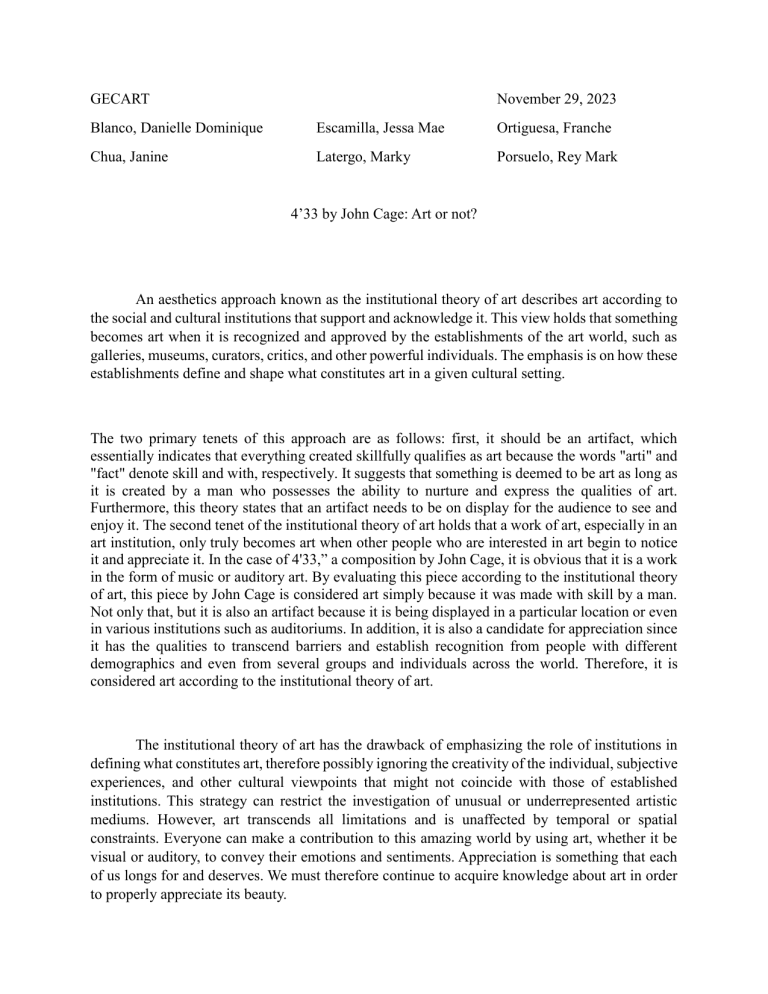John Cage's 4'33: Art or Not? An Institutional Perspective
advertisement

GECART November 29, 2023 Blanco, Danielle Dominique Escamilla, Jessa Mae Ortiguesa, Franche Chua, Janine Latergo, Marky Porsuelo, Rey Mark 4’33 by John Cage: Art or not? An aesthetics approach known as the institutional theory of art describes art according to the social and cultural institutions that support and acknowledge it. This view holds that something becomes art when it is recognized and approved by the establishments of the art world, such as galleries, museums, curators, critics, and other powerful individuals. The emphasis is on how these establishments define and shape what constitutes art in a given cultural setting. The two primary tenets of this approach are as follows: first, it should be an artifact, which essentially indicates that everything created skillfully qualifies as art because the words "arti" and "fact" denote skill and with, respectively. It suggests that something is deemed to be art as long as it is created by a man who possesses the ability to nurture and express the qualities of art. Furthermore, this theory states that an artifact needs to be on display for the audience to see and enjoy it. The second tenet of the institutional theory of art holds that a work of art, especially in an art institution, only truly becomes art when other people who are interested in art begin to notice it and appreciate it. In the case of 4'33,” a composition by John Cage, it is obvious that it is a work in the form of music or auditory art. By evaluating this piece according to the institutional theory of art, this piece by John Cage is considered art simply because it was made with skill by a man. Not only that, but it is also an artifact because it is being displayed in a particular location or even in various institutions such as auditoriums. In addition, it is also a candidate for appreciation since it has the qualities to transcend barriers and establish recognition from people with different demographics and even from several groups and individuals across the world. Therefore, it is considered art according to the institutional theory of art. The institutional theory of art has the drawback of emphasizing the role of institutions in defining what constitutes art, therefore possibly ignoring the creativity of the individual, subjective experiences, and other cultural viewpoints that might not coincide with those of established institutions. This strategy can restrict the investigation of unusual or underrepresented artistic mediums. However, art transcends all limitations and is unaffected by temporal or spatial constraints. Everyone can make a contribution to this amazing world by using art, whether it be visual or auditory, to convey their emotions and sentiments. Appreciation is something that each of us longs for and deserves. We must therefore continue to acquire knowledge about art in order to properly appreciate its beauty.




